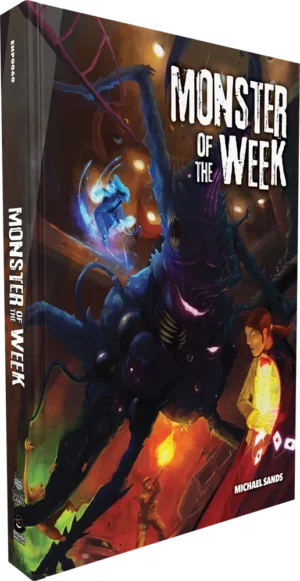Ten Candles Horror; Dark; Bleak; Narrative-Driven; Survival; GM-less / Cooperative; Resource Management
Ten Candles is a tragic horror tabletop roleplaying game where players collaboratively tell the story of a world consumed by darkness and the inevitable demise of their characters. Played in a darkened room with only ten lit candles, the game emphasizes narrative-driven gameplay, resource management (the candles themselves), and a GM-less, cooperative experience. Though praised for its unique mechanics and immersive atmosphere, some players find the predetermined tragic ending and candle mechanic frustrating. Despite this, Ten Candles has garnered significant recognition, including ENnie Award nominations and recommendations from prominent figures in the tabletop gaming community. The game fosters a strong sense of shared storytelling and encourages players to explore themes of hope and despair in the face of overwhelming darkness.
Theme and Setting
Ten Candles plunges players into a world shrouded in eternal darkness after a cataclysmic event. A malevolent force, referred to as 'THEM,' has emerged, preying on humanity's vulnerability. The game focuses on the final hours of a group of survivors as they struggle against the encroaching darkness and the horrors that lurk within it. The setting is intentionally flexible, allowing for diverse interpretations of the world's final days, but always retaining the core elements of a world plunged into darkness and terrorized by mysterious entities. The core premise revolves around resource scarcity, psychological trauma, and the ultimate futility of resistance. The game is designed to evoke feelings of dread, hopelessness, and the crushing weight of inevitable failure.
Core Mechanics and Rules
The game utilizes a simple d6 dice pool system. At the beginning of each scene (represented by a burning candle), players receive a pool of dice to use for conflict resolution. As candles are extinguished, the dice pool dwindles, reflecting the increasing hopelessness of the situation. To resolve conflicts, players roll the remaining dice, seeking successes (rolling a 6). The number of successes determines who has the narrative right to describe the outcome of the conflict. A unique mechanic involves 'Establishing Truths' at the beginning of each scene. As candles go out the players and GM collaboratively create new elements of the narrative, adding details about the world, new characters, or evolving circumstances, with the final truth always being 'And we are alive.' Each player creates a character with a virtue, a vice, a moment of hope, and a brink of despair. These aspects of the character can be 'burned' (discarded from play) to gain a reroll during a critical conflict.
What Makes It Unique
Ten Candles distinguishes itself through several key features. First, the use of actual candles as a central game mechanic creates an immersive and atmospheric experience. The dwindling light visually represents the diminishing hope and resources of the characters. Second, the GM-less, cooperative nature of the game encourages shared storytelling and player agency. The 'Establishing Truths' mechanic empowers players to shape the narrative and contribute to the world-building process. Third, the predetermined tragic ending subverts traditional RPG conventions. Instead of striving for victory, players focus on exploring the characters' final moments and finding meaning in the face of certain death. Finally, it is a zero-prep game that requires very little preparation from the players. The characters and scenario can all be defined at the beginning of the session, allowing for a quick start to gameplay.
Target Audience and Player Experience
Ten Candles is targeted towards players who enjoy narrative-driven, emotionally engaging, and character-focused experiences. It is particularly appealing to those who appreciate horror themes and are comfortable with exploring dark and challenging subjects. The game's cooperative nature makes it suitable for groups who value collaboration and shared storytelling. However, the tragic ending may not appeal to all players. Some may find the lack of agency in determining the ultimate outcome frustrating. Others find the candle mechanic to be a cheap and unfair way of progressing the story, though most enjoy the atmosphere it generates. The game demands a level of emotional maturity and a willingness to embrace the bleakness of the setting. The experience is designed to be memorable and thought-provoking, prompting players to reflect on themes of mortality, hope, and the human condition.



